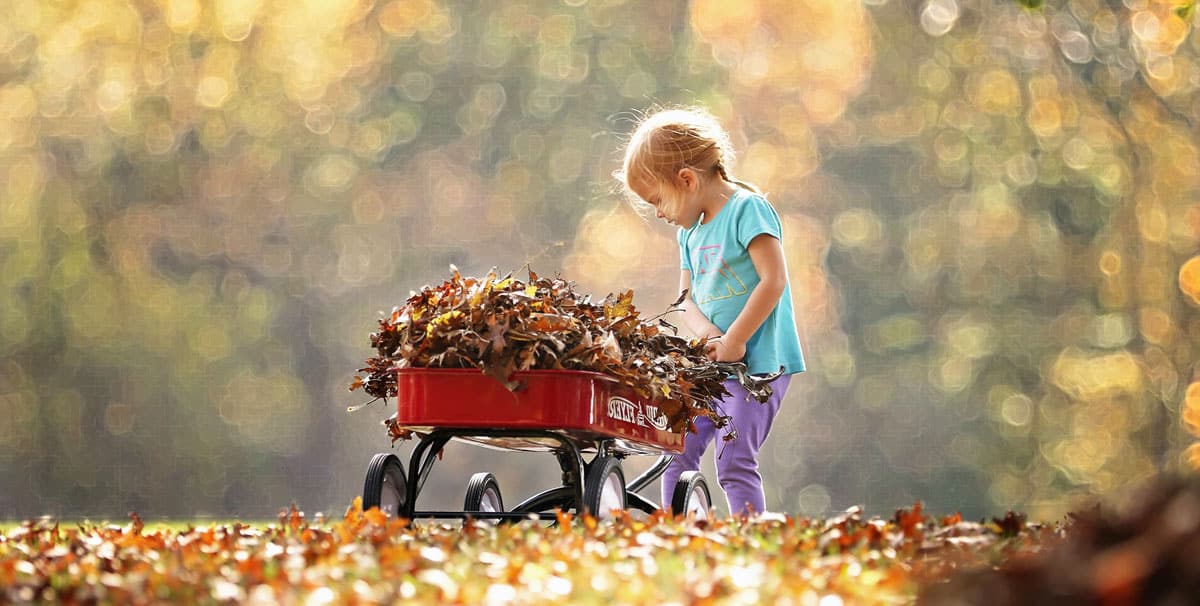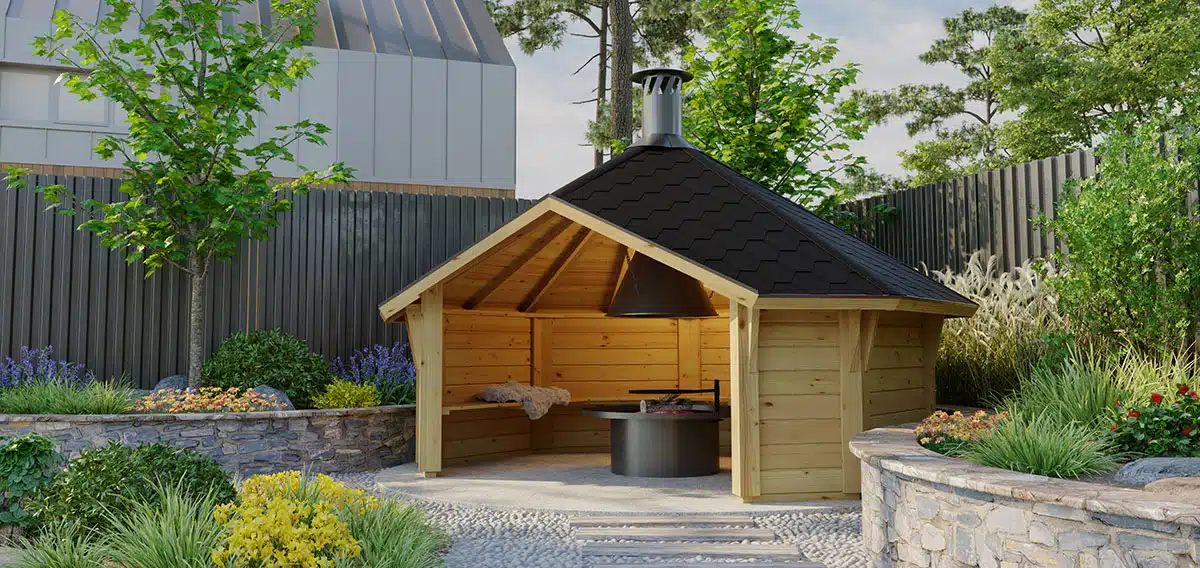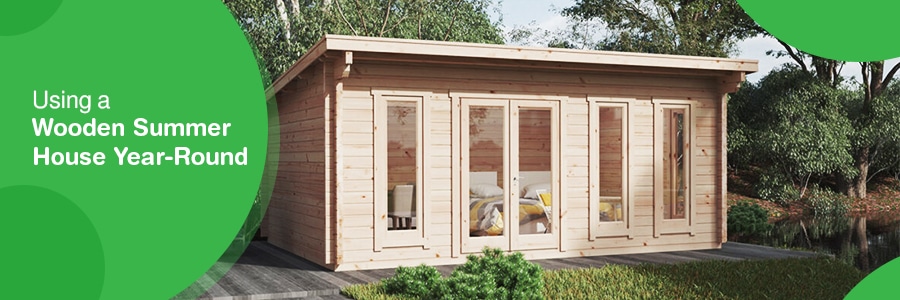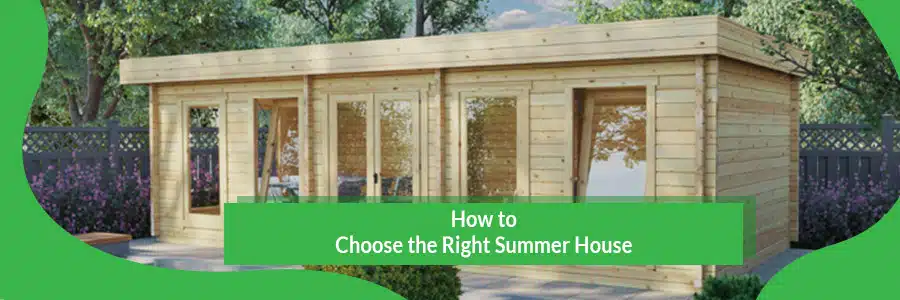How to Prepare Your Garden House for Autumn
08.09.2020
Garden houses are great investments that boost the curve appeal of your property and increase its value substantially. They are versatile, eco-friendly, and they make it possible for you to live closer to nature. Garden houses and log cabins are perfect for summer activities such as pool parties and barbecues, but now that autumn is approaching, it’s important to start thinking of some maintenance activities. By preparing your garden house for the colder seasons, you ensure that the rain, the snow, and the freezing temperatures won’t do any damage.
Read on to find out how to get your log cabin ready and how to embrace the upcoming autumn in your very own garden retreat:
Log Cabins Need Special Care Before Autumn Comes
As mentioned above, it’s very important to include some essential maintenance activities on your schedule before the cold weather hits. As autumn approaches, the temperatures begin to drop, the days become shorter, and the trees start to drop their leaves. In certain areas, autumns are quite rainy and they become chillier as winter approaches. If you paint your log cabin when the temperatures are below 10 degrees, the paint won’t dry properly, it won’t bond with the surface, and in time, you’ll start noticing cracks. Therefore, it’s best to do most of the maintenance while the weather is still nice.
Keep the lawn clean by removing the fallen leaves, twigs, and other weeds
The list of gardening chores in fall can be quite long: weeding, mowing, raking, planting, and the list goes on. By trimming the bushes, the trees, and the plants, you reduce the number of leaves that will fall on the ground. You might be asking yourself ‘What does gardening have to do with garden house maintenance?’. The answer is simple. Falling leaves and twigs can clog and block your sewage system and your gutters. So, if your garden house is surrounded by trees, you should definitely cut the dead branches, to avoid them from falling due to storms or heavy snow. Get rid of the fallen leaves regularly by using them as compost or throwing them away. You don’t want dead leaves to be piling up because they can damage the grass and the plants under them.
Check and repair the gutters and the sewage system
As mentioned above, leaves, fruit, and debris can do quite a lot of damage, so, autumn is the perfect time to check for blockages in the drainage systems. By removing all the dirt and by unclogging the gutters, you ensure that when more leaves fall, your drainage system won’t be overwhelmed and the extent of additional blockage will be relatively low. For large log cabins, it’s best to cover the gutters with gutter guards.
Check the log cabin’s walls and roof
Before the rainy season begins, make sure you check the wooden walls and roof of your log cabin for signs of damage. If you notice any cracks or holes, fill them. Also, check for wear and tear and fix the parts that are in bad shape or replace them completely. The roof will usually require special maintenance, so it’s best to hire a specialist to take a look at it. If he finds that the roof is significantly damaged, you might have to consider replacing it.
Check the heating system or install one
If you want to use your garden house as a home office year-round, you’ll need to get a heating system installed. When it comes to garden houses and log cabins, electric space heaters are a great option. You can also opt for forced air systems, radiant heated floors, or gas-fed fireplaces. If you already have a heating system in place, you have to ensure that it’s functioning efficiently. Again, this should be done by a specialist who, depending on the type of heating system, will check for carbon monoxide leakage, check the ductwork, clean the dust, the soot, and the blower, and get it up and running. If you don’t hire someone by the end of summer, during autumn and winter.
Check the external water pipes
As winter approaches, temperatures start to drop and the external pipes might freeze, which is an extremely unpleasant incident. Blocked and clogged external pipes are more likely to freeze and even to crack. The best way to protect the pipes is by covering them with heating tape or other types of insulation. You should also check the hot water system and fix any issues that might prevent it from functioning perfectly over the cold winter months. Cold showers are not a huge issue in summer, but they are in winter.
Take a look at the fireplace and the chimney
If your log cabin is equipped with a fireplace and a chimney, it’s advisable to check them in advance. This will allow you to avoid a lot of problems during autumn and winter. If you notice any cracks in the roof or the chimney and you live in an area that gets really cold winters, you risk water infiltration. Having snow falling inside your log cabin might not seem like a huge problem in movies or cartoons, but it can cause serious damage to a wooden garden house. You should also inspect the fireplace, especially if you have a traditional one, to avoid carbon monoxide leaks. If you notice any problems with the fireplace, hire a specialist to fix it right away to avoid any dangerous situations.
Insulate your log cabin or ensure that the current insulation is in good shape
Depending on the type of log cabin, you might have to check the roof insulation, the attic insulation, and the vapor barrier, that should always be installed facing downwards. If you bought a garden house recently, and want to insulate it, keep in mind that 70% of the heat is lost through the roof and the floor, so that’s what you should pay the most attention to. Floor and roof insulation kits are available for purchase and they can usually be added as an extra option when buying a log cabin. An insulated garden office, hobby room, or guest house can be used year-round, so make sure you don’t skip this step.
Inspect the doors and the windows
Cracks in the doors and windows of your log cabin can cause more damage if you don’t fix them in time. When the temperatures drop, these cracks can widen and they can allow water to infiltrate the walls. Check all the doors and windows for cracks, and if needed, replace them with double-glazed ones.
Re-paint and treat the exterior walls of the log cabin
Although the sun isn’t shining as brightly as it did during summer, there’s still some time left before the cold weather hits. So you have some time for a few more maintenance activities such as re-painting and treating the wood. Good maintenance will make your log cabin more durable and will increase its lifespan. Experts advise that log cabins should be repainted every two years to ensure that they last a lifetime.
As a homeowner and log cabin enthusiast, you probably already know that every season comes with certain maintenance activities and inspections. However, most of them need to be done during autumn to prevent bad weather from doing significant damage. Log cabins are amazing and versatile structures that, when care for properly, can be extremely durable and inexpensive. Prevention is key when it comes to log cabin maintenance, so make sure you follow the steps mentioned above before cold weather hits.
Categories:
How ToWant to discuss over phone. Let us call back to you
If you need any additional info regarding any product, please fill in the below form and we will get back to you, usually the same or next working day.
Have any questions regarding some product?
If you need any additional info regarding any product, please send us your questions.




